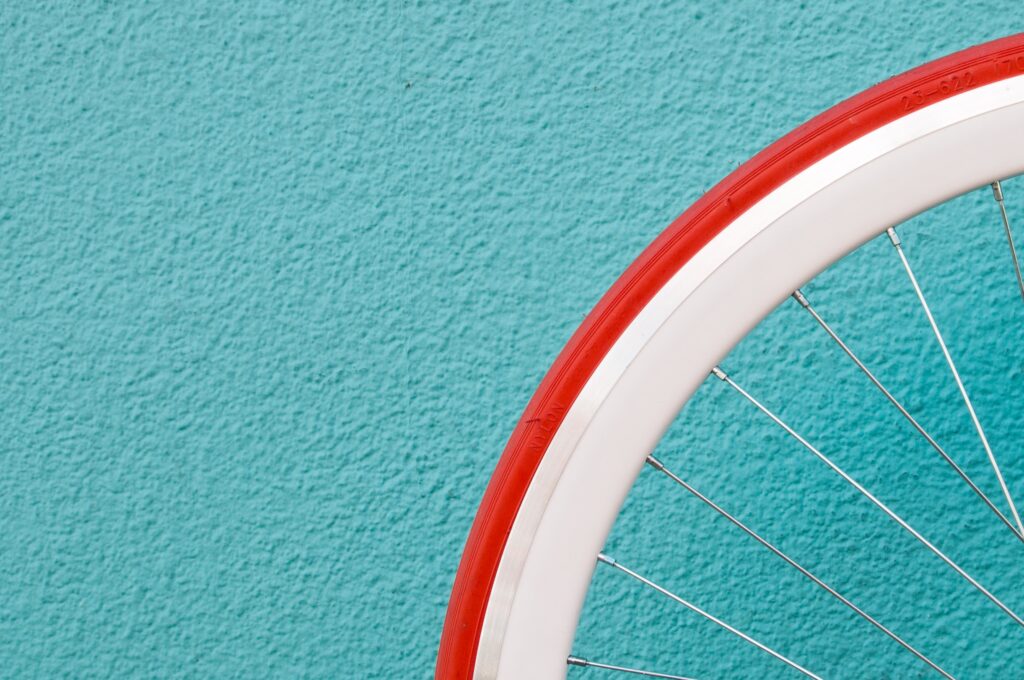Hey there, e-bike enthusiasts! Get ready to take your riding to the next level with our “Advanced E-Bike Riding Tips” section. In this series, we’re all about going beyond the basics and exploring the intricate technical aspects of e-biking. From advanced security measures to extreme uphill climbing techniques, we’ve got you covered. If you’re an intermediate to advanced rider who’s serious about e-biking, this is the place for you. In our latest article, we’ll be diving into the world of e-bike power modes and how you can optimize them for both speed and efficiency. Whether you’re a commuter, a mountain biker, or an e-bike racer, there’s always something new to learn about these complex machines. Get ready to become a pro at maximizing your e-bike’s performance!

Overview
Hey there, E-Bike enthusiasts! Welcome to our comprehensive guide on optimizing for speed and efficiency through power modes. In this article, we will delve into the intricacies of power modes, exploring their different options, advantages, and disadvantages. We will also discuss the factors that affect speed and efficiency, providing tips and techniques for maximizing both. Additionally, we will address the importance of balancing speed and efficiency and explore the possibility of customizing power modes. Battery management and the impact of power modes on battery life will also be covered, along with advanced power modes and their special features. We will wrap up with expert tips and techniques for achieving the optimal ride and conclude with a recap of the key takeaways.
Understanding power modes
Before we dive into optimizing for speed and efficiency, let’s first understand what power modes are. Power modes, also known as assist levels or pedal assist modes, are settings on e-bikes that determine the amount of assistance provided by the electric motor while pedaling. These modes vary in power output, with some modes prioritizing speed while others focus on conserving energy. By adjusting the power mode, riders can tailor their e-bike’s performance to suit their riding preferences and the specific conditions they encounter.
Why optimize for speed and efficiency
Optimizing for speed and efficiency on an e-bike is crucial for several reasons. Firstly, speed optimization allows riders to reach their destinations faster, making e-bikes an efficient mode of transportation for commuting and getting around town. Secondly, optimizing for efficiency ensures that the e-bike’s battery lasts longer, extending the range of the bike and reducing the frequency of recharging. Striking a balance between speed and efficiency on an e-bike ensures an enjoyable and practical riding experience.
Power Mode Options
Now that we have a grasp of what power modes are and why they are important, let’s take a closer look at the different power modes available on e-bikes.
Different power modes available on e-bikes
Most e-bikes offer several power modes to choose from. These modes typically range from low power, which provides minimal assistance, to high power, which delivers maximum assistance. The specific names and number of power modes may vary between e-bike models and manufacturers. However, the underlying concept remains the same – to provide riders with control over the level of assistance they receive while pedaling.
Exploring the advantages and disadvantages of each mode
Each power mode comes with its own set of advantages and disadvantages. Low-power modes, for example, conserve battery life and are ideal for gentle cruising or conserving energy during long rides. On the other end of the spectrum, high-power modes offer maximum assistance and are perfect for tackling steep hills or accelerating quickly. However, high-power modes tend to drain the battery faster. Intermediate power modes strike a balance between assistance and battery conservation. Understanding the advantages and disadvantages of each power mode will help riders select the most suitable mode for their desired riding experience.
Optimizing for Speed
Now that we are familiar with power modes, let’s explore how to optimize for speed on an e-bike.
Factors affecting speed
Several factors come into play when it comes to achieving maximum speed on an e-bike. The power output of the motor, the weight of the rider and bike, aerodynamics, and the terrain all influence the top speed that can be achieved. Riders should take these factors into consideration when aiming to maximize their e-bike’s speed.
Adjusting power modes for maximum speed
To optimize for speed, riders can adjust the power mode according to their desired level of assistance. High-power modes provide the most assistance, allowing riders to reach higher speeds more easily. However, utilizing a high-power mode continuously may drain the battery faster. It’s important to strike a balance between power mode and battery life to ensure a satisfying speed without compromising on the overall riding experience.
The role of terrain and riding conditions in speed optimization
The terrain and riding conditions also play a crucial role in speed optimization. Riding on flat and smooth surfaces enables higher speeds, while uphill climbs or rough terrains may require a higher power mode for assistance. By assessing the terrain and adjusting the power mode accordingly, riders can optimize their e-bike’s speed for different riding conditions.
Optimizing for Efficiency
In addition to speed, optimizing for efficiency is equally important when riding an e-bike. Let’s explore how to achieve maximum efficiency through power modes.
Importance of efficiency in e-bike riding
Efficiency is key when it comes to e-bike riding. By using power modes effectively, riders can conserve energy, extend their e-bike’s range, and reduce the frequency of recharging. Maximizing efficiency allows for longer, more enjoyable rides without worrying about running out of battery power.
Factors affecting efficiency
Several factors impact the efficiency of an e-bike. The weight of the rider, level of motor assistance, terrain, and riding style all play a role in determining the bike’s efficiency. By understanding these factors and making informed decisions regarding power modes, riders can optimize their e-bike’s efficiency and get the most out of their rides.
Tips for maximizing efficiency through power modes
To maximize efficiency, riders can start by selecting a power mode that provides the appropriate level of assistance for the current ride. It’s important to find the sweet spot between too little assistance, which may result in excessive rider effort, and too much assistance, which may drain the battery unnecessarily. Additionally, maintaining a steady and consistent pedaling cadence can help optimize efficiency. Monitoring and adjusting the power mode throughout the ride based on the terrain and riding conditions will also contribute to maximizing efficiency.

Balancing Speed and Efficiency
For the ultimate riding experience, balancing speed and efficiency is essential. Let’s explore how riders can achieve this delicate balance.
Finding the optimal power mode for a balanced ride
Balancing speed and efficiency starts with finding the optimal power mode for a given ride. Riders should consider the desired speed and the terrain they will be encountering. If efficiency is the priority, selecting a power mode that conserves energy while still providing adequate assistance is crucial. On the other hand, if speed is the primary objective, riders may opt for a higher power mode and accept a slightly reduced efficiency to achieve their desired faster pace. Striking the right balance ensures an enjoyable ride that maximizes both speed and efficiency.
Strategies for achieving a balance between speed and efficiency
While power mode selection is the key to achieving a balance between speed and efficiency, riders can also employ additional strategies to optimize their e-bike’s performance. These strategies include maintaining a consistent pedaling cadence, utilizing regenerative braking to recapture energy, and making conscious efforts to improve aerodynamics by reducing wind resistance. By incorporating these strategies alongside power mode adjustments, riders can fine-tune their e-bike’s balance between speed and efficiency to suit their individual preferences.
Customizing Power Modes
Not all e-bikes offer the same power modes, but some models allow riders to customize their power modes. Let’s explore the benefits and challenges of customizing power modes.
The possibility of customizing power modes on e-bikes
Certain e-bike models provide riders with the ability to customize their power modes to suit their specific needs and preferences. This customization often involves adjusting factors such as power output, pedal assist sensitivity, and throttle response. Customizable power modes give riders greater control over their e-bike’s performance and allow for a more personalized riding experience.
Benefits and challenges of customizing power modes
Customizing power modes offers several benefits. Riders can tailor the level of assistance to their specific riding style, allowing for a more intuitive and seamless ride. Customization also enables riders to fine-tune the power output to match their strength and preference, providing a more enjoyable and efficient riding experience. However, it’s important to note that customizing power modes may require a deeper understanding of e-bike technology and could void the warranty if not done correctly. Riders should carefully consider the pros and cons before embarking on customizing their e-bike’s power modes.

Battery Management
Understanding how power modes affect battery life is crucial for efficient e-bike riding. Let’s take a closer look at battery management in the context of power modes.
Understanding the impact of power modes on battery life
Power modes have a direct impact on battery life. Choosing a higher power mode will drain the battery faster, while selecting a lower power mode will conserve energy and extend battery life. It’s essential to strike a balance between power mode and battery life to ensure riders can reach their desired destinations without running out of battery power.
Tips for optimizing battery performance through power modes
To optimize battery performance, riders can make informed decisions regarding power mode selection. If conserving battery life is the priority, selecting a lower power mode or adjusting the power mode based on the terrain can help extend the e-bike’s range. Minimizing unnecessary throttle usage and utilizing regenerative braking can also contribute to maximizing battery performance. By taking these tips into account, riders can make the most of their e-bike’s battery life and avoid unexpected power depletion.
Understanding the trade-off between speed/efficiency and battery life
It’s important to recognize that there is a trade-off between speed, efficiency, and battery life. Opting for higher power modes may provide a speed advantage but will drain the battery faster. Conversely, selecting lower power modes may conserve battery life but could sacrifice speed or overall efficiency. By finding a balance that aligns with personal preferences and practical needs, riders can achieve a balance between speed/efficiency and battery life that suits their individual riding goals.
Advanced Power Modes
While most e-bikes offer standard power modes, some models feature advanced power modes with additional functionalities. Let’s explore these advanced power modes and their benefits.
Exploring advanced power modes available on certain e-bike models
Advanced power modes are designed to provide riders with enhanced control and performance capabilities. These modes often include customizable settings, allowing riders to fine-tune their e-bike’s power delivery to suit their specific preferences. Advanced power modes may offer additional features such as torque sensors, responsive pedal assist, or specialized riding modes for different terrain or riding styles.
Special features and benefits of advanced power modes
The special features and benefits of advanced power modes vary between e-bike models. Torque sensor technology, for example, measures the force applied by the rider and adjusts the level of assistance accordingly, providing a more intuitive riding experience. Responsive pedal assist ensures that power delivery is smooth and harmonious, mimicking natural pedal effort. Specialized riding modes, such as eco or turbo modes, cater to different riding scenarios, optimizing speed or efficiency as desired. These advanced power modes offer riders a more personalized and versatile riding experience, allowing them to push the boundaries of e-bike performance.

Tips and Techniques
We’ve covered the various aspects of power modes and optimizing for speed and efficiency. Now, let’s explore some expert tips and techniques for maximizing your e-bike’s performance.
Expert tips for maximizing speed and efficiency
- Maintain a consistent pedaling cadence to optimize efficiency.
- Utilize regenerative braking whenever possible to recapture energy and extend battery life.
- Make conscious efforts to improve aerodynamics by reducing wind resistance.
- Keep your e-bike well-maintained, ensuring that tires are properly inflated and drivetrain components are clean and lubricated.
- Experiment with power modes and find the sweet spot that balances speed and efficiency for your preferred riding style.
Techniques for effectively utilizing power modes in different riding scenarios
- When tackling steep uphill climbs, switch to a higher power mode to gain assistance and maintain a reasonable pace.
- For long, flat stretches, experiment with lower power modes to conserve battery life and maintain a comfortable cruising speed.
- If range anxiety is a concern, start your ride with a higher power mode and gradually decrease the assistance as your battery level decreases.
- Adjust the power mode based on the riding conditions—strong headwinds or challenging terrain may require higher assistance levels.
- Practice using different power modes during training rides to determine which mode provides the best balance between speed and efficiency for your specific riding needs.
Conclusion
We’ve covered a wide range of topics related to optimizing for speed and efficiency through power modes on e-bikes. We explored the different power modes available, discussed the factors affecting speed and efficiency, and provided tips for maximizing both. We emphasized the importance of striking a balance between speed and efficiency and delved into the possibility of customizing power modes. Battery management, advanced power modes, and expert tips and techniques were also discussed. By understanding and harnessing the power of power modes, intermediate to advanced e-bike riders can elevate their riding experience to new heights. So hop on your e-bike, adjust your power mode, and enjoy the exhilarating journey ahead!




